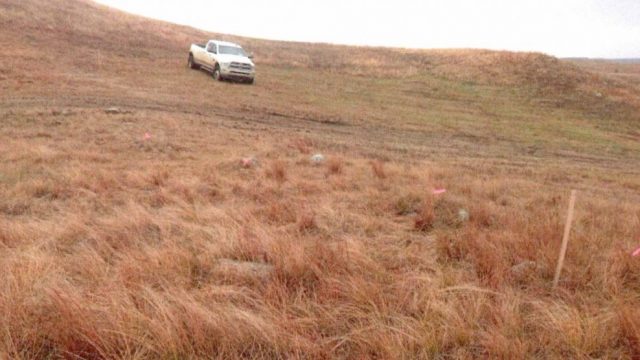#DAPL Contacted State Historical Society About Artifact Find but Didn’t Immediately Notify the PSC

This is a really unfortunate story, because it’s ultimately a trivial problem which can be solved with better communication, but it’s going to be made into a much bigger problem because the debate around this pipeline is a tinderbox right now.
All of this could have been avoided.
Here’s what happened:
On or about October 15 the pipeline company discovered a some stone cairns and other artifacts along the pipeline route.
On October 17 the State Historical Society was alerted of the find per the pipeline company’s rules for unanticipated discoveries. They investigated the matter and signed off on a route change to avoid any impacts.
On October 27 the pipeline company alerted the North Dakota Public Service Commission about the find.
Commissioner Julie Fedorchak is peeved with the delay, but the pipeline company did notify the North Dakota Historical Society as required by the rules governing archaeological finds. “Commission Chairwoman Julie Fedorchak said she’s disappointed the company didn’t notify the PSC at the same time as the State Historic Preservation Office,” Amy Dalrymple reports.
This seems like a rather trivial matter. The pipeline company maintains that all proper procedures were followed, something which Fedorchak agrees with noting that the site was protected from the point at which it was discovered:
Fedorchak said the historic preservation office was “apologetic” for not notifying the PSC about the discovery.
“The process was followed, the site was protected, the experts that were responsible for that were engaged quickly and the work was done effectively,” she said.
In other words, it seems like the rules worked. The problem wasn’t failing to protect important archaeological artifacts. The artifacts were, and continue to be, protected. After the pipeline company found the cairns and artifacts the route was moved.
The problem was communication, whether it’s the pipeline company getting word to the PSC faster or the PSC/State Historical Society getting their intra-government memorandums in order.
Either way, the people involved here have got to be aware that they are operating in a political tinderbox. Even something as ultimately picayune as a delayed notice to regulators on a find like this – a delay which impacted exactly nothing based on the facts we have now – will be seized on and twisted to fit one political narrative or another.
That’s too bad.
The pipeline company can’t afford to be anything less than exacting and scrupulous in adherence with ever aspect of the rules. Even, at this point, the “spirit” of the rules.
By the way, the State Historical Society never contacted the Standing Rock Sioux Tribe about any of this. “Asked why his office didn’t notify the tribe, [Chief Archaeologist Paul] Picha said it’s not required in the unanticipated discovery plan,” Dalrymple reports.
That’s unfortunate. While I’m not sure the tribe has positioned itself to be trusted to approach these situations with pure motives and intent – it’s clear at this point that they just want to block the pipeline – communication still has to happen.




